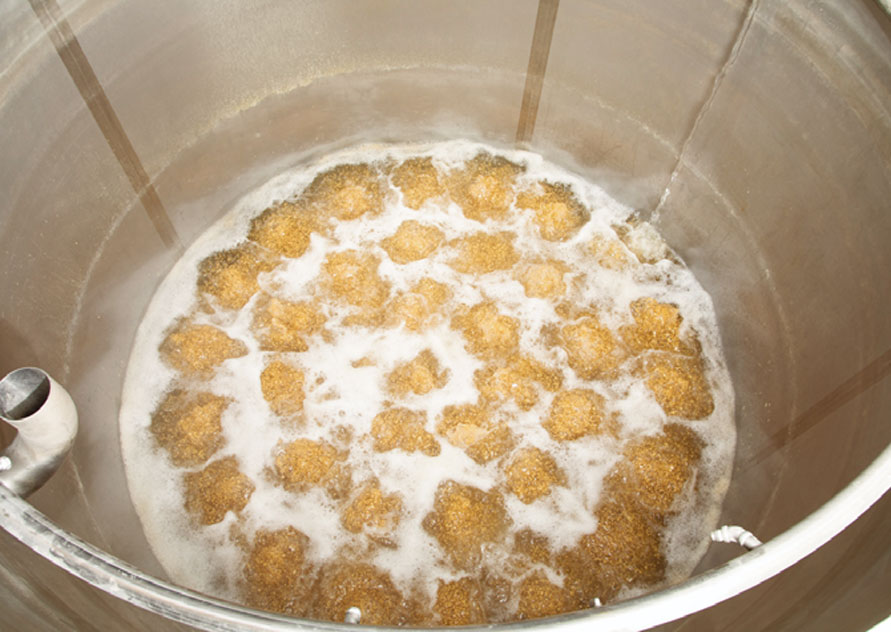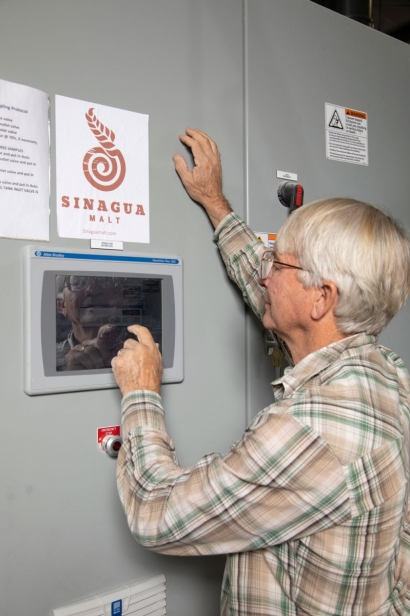The Malting Process
After harvest, the barley is stored in a silo until processing. Before processing, it is cleaned of debris, grit and other foreign material.
Step 1: Steeping. This is a soaking process that allows the grains to absorb water and swell from 8% to 45% hydration. The grains are drained and “air rested.” This respiration interval allows the starches to develop and starts the enzyme process that initiates sprouting.
Step 2: Germination. The soaked barley is transferred to the four-ton-capacity malting vessel where a current of humid air flows over the barley at 62º– 63ºF for about four days before kilning. The grain is closely monitored to make sure the moisture content is constant at 45%. When the “beard” is visible on the sprouted grains, then the grain is ready for kilning.
Step 3: Kilning. This is the drying process that captures the precise moment of optimal starch and enzyme development, when the barley is heated to stop the germination. Very slowly at a low temperature of about 120ºF the grain is dried for around 12–36 hours. This is a constant monitoring process aided by sophisticated computer equipment.
Step 4: Toasting. Finally, the grain is heated to 180º to cure, which very slightly toasts the kernels and brings out the sweet, nutty flavor of the malt. After this last curing process, the grain needs to age a few weeks before it is shipped to the breweries, where it is milled for the brewing process.









